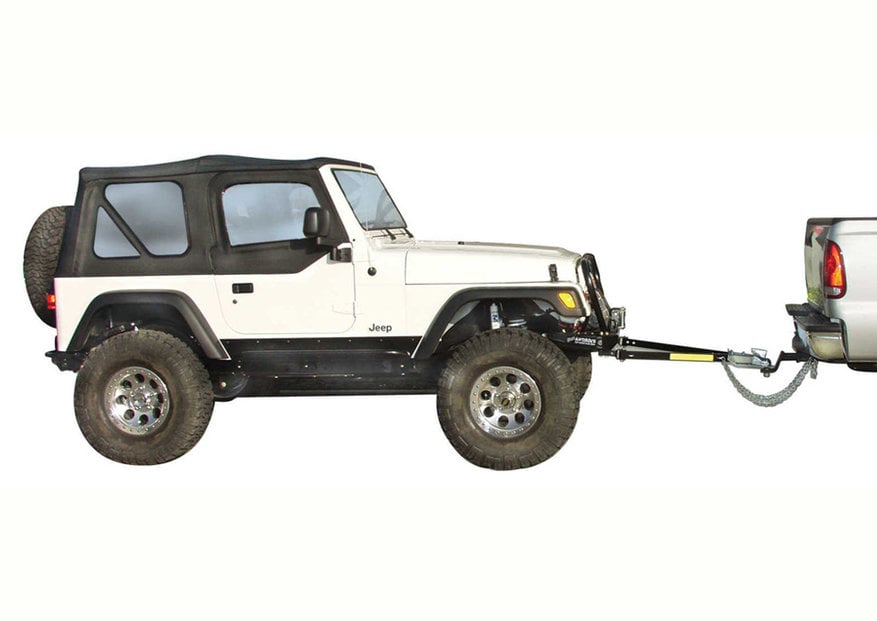According to the Jeep manual:
If moving a Jeep by recreational towing, such as behind a motorhome, the vehicle must have all four wheels in contact with the pavement. The reason for this is because internal damage to the transfer case can occur if a front or rear wheel lift is used when recreational towing.How To Tow A Jeep Wrangler Unlimited Behind An RV
First, the transfer case must be shifted into NEUTRAL. Here's how to do that:Key must be in the "accessory" position:
- Depress and hold the brake pedal.
- Set Parking Brake
- Shift an automatic transmission into NEUTRAL (N) or depress clutch pedal on manual transmission.
- Shift the transfer case level into NEUTRAL (N).
- Start the engine.
- Shift the automatic transmission into DRIVE (D) or the manual transmission into gear.
- Release the brake pedal and ensure that there is no vehicle movement.
- IMPORTANT: Shut the engine off and place the ignition key into the unlocked OFF position.*
- Shift the automatic transmission into PARK (P).
- Apply the parking brake.
- Attach the Jeep to the tow vehicle with a tow bar.
- Release the parking brake.
Note: Damage to the transmission may occur if the transmission is shifted into PARK (P) with the transfer case in NEUTRAL (N) and the engine running!
Note: Do not use a bumper mounted clamp-on tow bar on the Jeep Wrangler or Wrangler Unlimited JK. The bumper face bar can be damaged. You can shop all the bumpers we sell here
How To Shift Out Of Neutral On A Jeep Wrangler Unlimited
Once you reach your destination, you will want to unhook the Jeep from the tow vehicle. Here's how to do that:- Shift the automatic transmission into NEUTRAL (N) or depress the clutch pedal on a manual transmission.
- Shift the transfer case lever into desired position (2-Hi, 4-Hi or 4-Lo)
- Shift the automatic transmission into DRIVE (D) or release the clutch on a manual transmission.
Note: It may be easier to shift the transfer case into position if you start the engine on the Jeep first.
From the Jeep manual:
The transfer case NEUTRAL (N) position disengages both the front and rear driveshafts from the powertrain and will allow the vehicle to move despite the transmission position. The parking brake should always be applied with the driver is not in the vehicle.





















